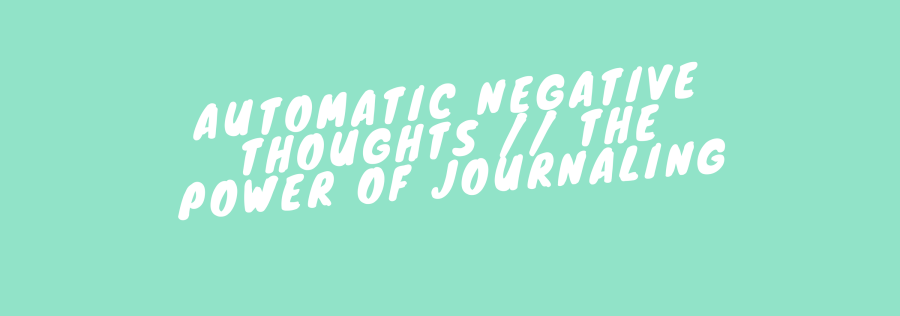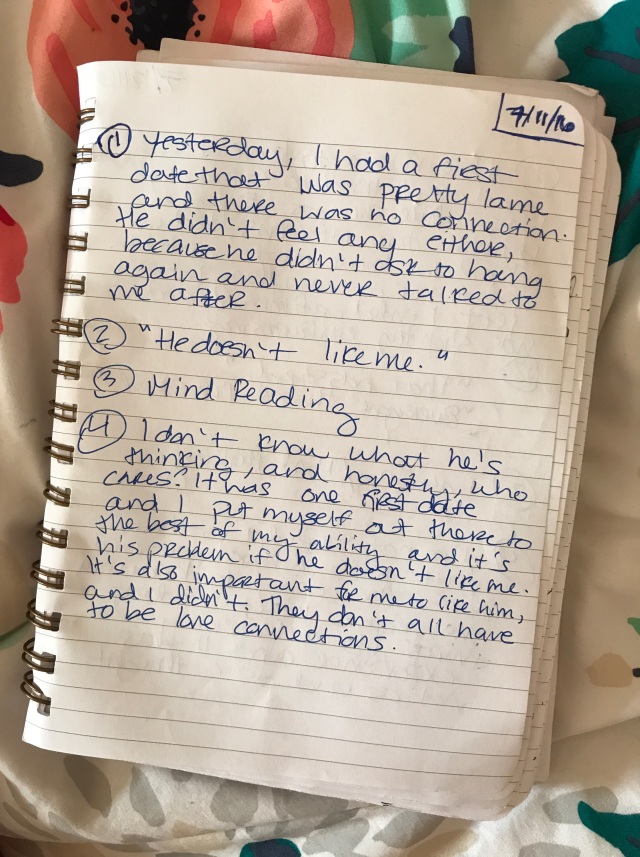I’m sure you’ve heard the phrase – the only certainty is that nothing is certain. In life, we come face to face with uncertainty on a daily basis. Whether it’s not knowing the outcome of a romantic relationship when it’s hit rocky terrain or feeling unsure about the stability of your job, the “not knowing” makes us uncomfortable. Very uncomfortable.
But you know what comes from being uncomfortable? You guessed it – growth. Before I started my own journey with therapy, I had a very hard time with this. Uncertainty and change were swear words to me, I didn’t embrace the idea – I either ran from it or ruminated to the point of exhaustion.
Anything from not knowing the outcome of a job interview, test, paper, or even not hearing back from a person about plans made would send me into a toxic cycle of obsessive thoughts and crippling anxiety. It was only through speaking with my therapist that I’ve come to this realization: Uncertainty is a natural part of life…and it can be a positive.
It’s all in how you think about it. Then again, that’s usually the case with most situations. Like I always say, how you think moment to moment matters. This is no different.
I think the hardest part about dealing with uncertainty is the attachment we give to any specific outcome. When an event or situation has a genuine significance to us, it’s almost a knee jerk reaction to get comfortable with one way things could turn out.
While many attempt to control or avoid it, let’s talk about some ways we can embrace uncertainty and learn to tolerate it.
Cut off the control
When things don’t go our way, or have the potential not to, what’s the first thing anxiety holds onto? Control.
Through uncertainty, we learn that control is tricky. While we cannot control the situation or others – how they react or feel to certain situations – we can control ourselves.
Take control of your language and the words, thoughts you use. Negative talk is not going to help you grow through an uncomfortable situation. Thinking thoughts like, “I’m just going to fail,” “This is killing me,” or “Worst day ever,” are just fueling your negative automatic thought spiral. Instead, get in the driver’s seat of your own mind. Control the questions you ask yourself:
“Why is this happening?”
“How can this be a good thing?”
“What can I do – or think – to help my situation?”
This is known as cognitive restructuring – a very powerful way to get more comfortable with uncertainty. When we no longer blindly accept the automatic negative thoughts that have come so easily in the past, we are developing the skills to battle them.
Another example would be if the thought, “I can’t handle this uncertainty” goes through your mind, challenge it with “Uncertainty is less than ideal, but I accept it and I can handle whatever comes my way.”
Your inner monologue is really the only thing you can truly control in an event of uncertainty.
See the future as open, not empty
When the unknowns in life are looming like a dark cloud, it can be so easy for our minds to go straight to the negative. Whether you are just graduating college and starting out in the “real” world, experiencing a breakup, or any other form of change you don’t have a handle on, do not allow yourself to see the future as a wasteland.
Interpret the future as open, not empty. While we may think worse case scenario, there are endless possibilities waiting in the unknown, and that is kind of exciting. From one door closing, or an event ending a chapter of your life, something bigger might be just around the corner – it’s all how you perceive it.
Get some extra support
Dealing with uncertainty is tough and while our normal support system can be comforting – sometimes you need a little extra help.
My own therapist has some great tools and mantras for me when uncertainty crowds my thoughts. She suggested repeating the Serenity Prayer to myself in times of high anxiety during change, or uncertainty. While I am not religious, when taken in an empowering way, this prayer can be helpful (this is a section of the prayer, not the entire thing):
“Grant me the serenity, to accept the things I cannot change. Courage to change the things I can, and the wisdom to know the difference. Living one day at a time, enjoying one moment at a time, accepting hardship as the pathway to peace.”
You can even write it down. Create a list of what you believe is in your control and take action with those activities, if you need to do something to ease your anxiety. Also, make a list of what you cannot control, and visualize yourself handing it off to whatever you deem a higher power – or just releasing it. It doesn’t have to be handing off. For me, I visualize writing the list and then just actively letting it go. Allowing it to float away, into the sky. It’s calming and empowering to let go.
That extra support doesn’t always have to be a therapist though. While I lean on my therapist in trying times, I also have researched and found other, smaller ways to ease my anxiety. One of those is Simple Habit. A guided meditation app with exercises tailored for any kind of situation, I have a specific session I always find myself going back to when I’m high anxiety. It’s called Dealing With Failure and one of the mantras that they have you repeat goes like this:
“I do not have to be perfect and I learn from situations that have outcomes other than what I anticipated.”
Whenever I find myself anxious from an outcome I didn’t envision, I repeat this to myself over and over again, until the reality of the statement overpowers my irrational thoughts. We can learn from uncertainty and change, if we chose to.
Uncertainty is inevitable. No matter how hard we may try, controlling it doesn’t work – and can even make our anxiety even worse. Change or “not knowing” isn’t necessarily a bad thing, or something to wish away. It’s merely calling on us to practice acceptance, learn healthy control, and let go of created expectations.
Do you struggle with uncertainty? Share your story in the comments below!



